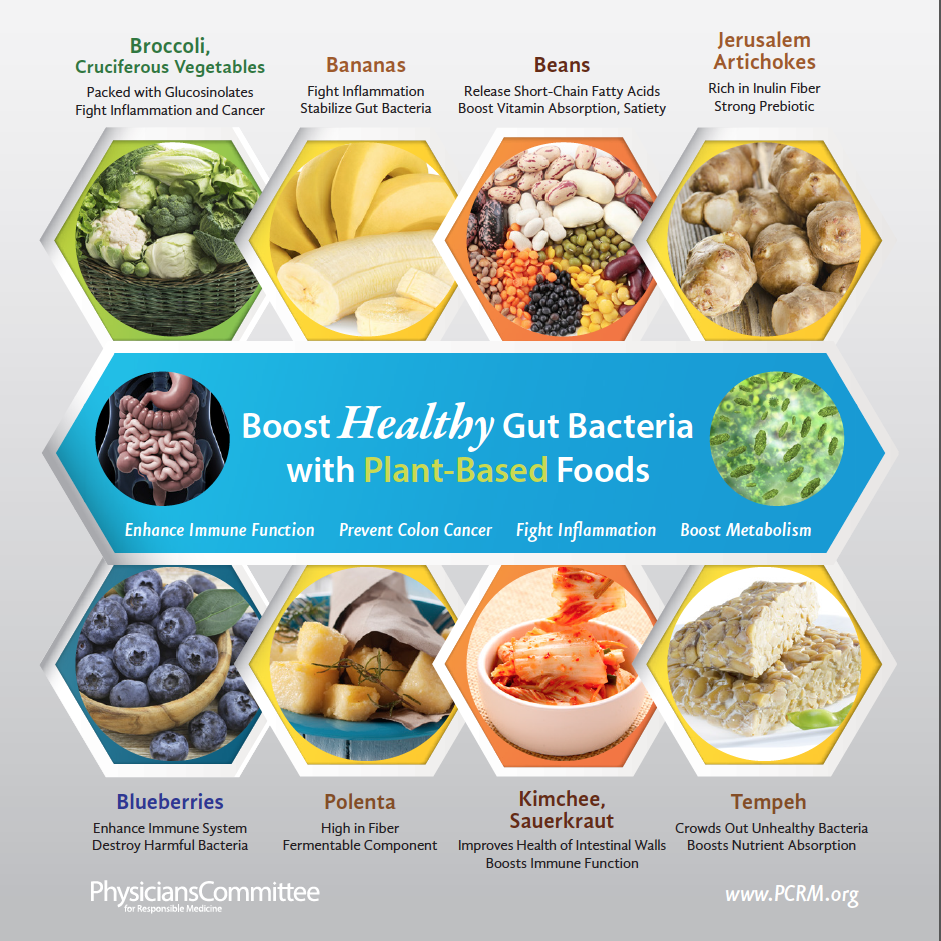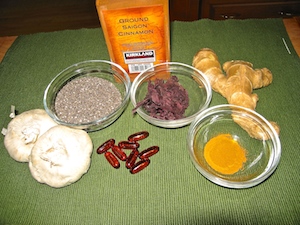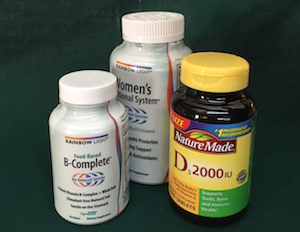

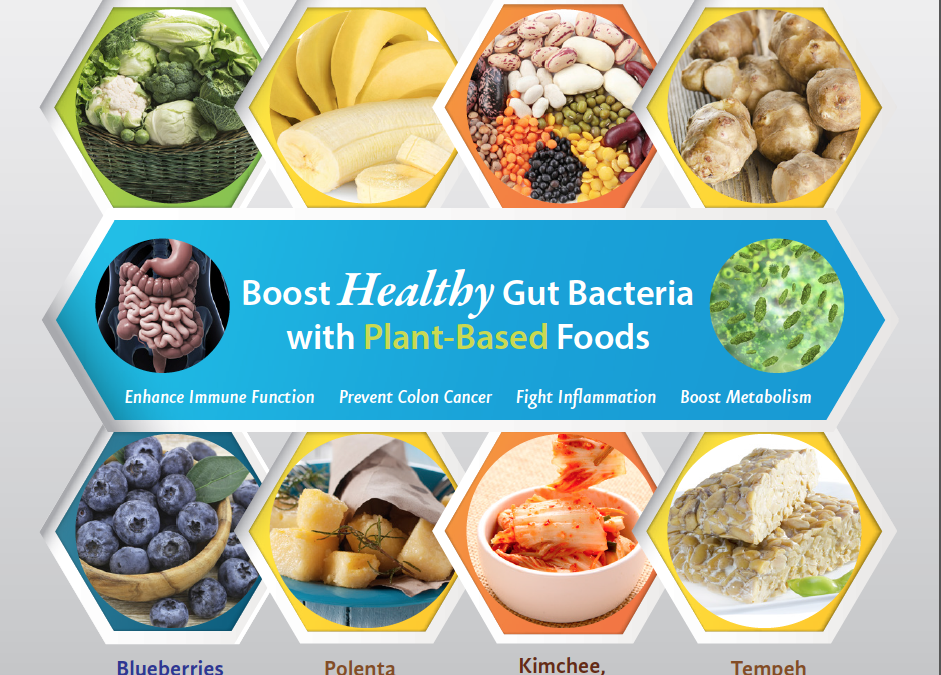
Your digestive system; where healing begins
Your digestive system plays a crucial role in your healing process. This complex series of organs and glands break down the food you eat into nutrients that your body can absorb, using them to provide energy, heal and fight off disease. It then releases the toxic waste your body doesn’t need. As a result, it is essential for those with chronic illness and disease to pay close attention to their digestive health as a part of their healing process.
The foods you eat, your stress level and overall health all play a role in the effectiveness and health of your digestive system. This has been known since ancient times. The two oldest systems of medicine, traditional Chinese and Ayurveda, both focus on digestion as one of the key factors that influence heath, directing their healing efforts on the link between a person’s digestive system and their mental and physical well-being.
The biggest factors that contribute to poor digestion are:
- Chronic stress
- Diets low in fiber and high in processed foods, wheat, simple carbohydrates and sugars
- Chronic infections
- Antibiotics
- Non-steroidal anti-inflammatories (NSAIDs)
- Overuse of acid blockers (Prilosec, Nexium, etc)
- Low grade food allergies (dairy, eggs, corn)
Signs that your digestive system is out of balance:
- Gas
- Bloating
- Headache
- Burping
- Reflux
- Neck, shoulder, mid/lower back pain
- Fatigue following a meal
- Abdominal distention
- Constant hunger
- Bowel irregularity
Fortunately, there are several things you can do to bring your digestive system back into balance:
- Improve your gut flora: Your gut flora is made up of microorganisms that live in the digestive tracts and help your body digest and absorb nutrients and fight against intruders. Healthy flora is critical for whole body health. Your body cultivates new flora every 24 hours through the foods you eat. This healthy bacteria that lives in your intestinal tract thrives on colorful, plant-based foods such as cruciferous vegetables, bananas, beans, Jerusalem artichokes, blueberries, polenta, kimchee & sauerkraut and tempeh. PCRM has created a wonderful infographic that shows the properties of these foods that support healthy digestion titled Boost Healthy Gut Bacteria with Plant Based Foods. Learn more about how to restore your gut flora.
- Eat plenty of fiber – Fiber is important in maintaining regular bowel movements so toxins don’t build up and become reabsorbed into your body. Fiber is found in vegetables, fruits, grains and legumes. There are two kinds of fiber: Soluble fiber (i.e oatmeal, nuts, beans, apples and blueberries) slows down digestion as it breaks down into a gel in your intestines Insoluble fiber (i.e. seeds, grains, stringy parts or skins of plant matter) speeds up digestion as it passes through the body mostly intact . It is important to have both types of fiber in your diet.
- Drink plenty of water – water helps your body flush out toxins through your digestive system and softens stools. Fiber, like a sponge, absorbs water. A high fiber diet without enough fluid intake will cause constipation, resulting in the malabsorption of nutrients and the reabsorption of toxic waste that was delayed in being removed from the body.
- Manage your stress – when under stress, your body experiences the “flight or fight” response causing your central nervous system to shut down blood flow, this affects the contractions of your digestive muscles and decreases secretions needed for digestion. Stress can also result in inflammation of the gastrointestinal system. Some useful tools for distressing are: exercise, yoga, meditation, visualizations, deep breathing, spending time with friends or family, laughter, or communing with nature. Find what works for you. It can be as simple of learning to give yourself a “time out” when feeling overwhelmed to scheduling “me” time everyday to enjoy an activity you love. Learn more about stress and digestion.
- Exercise regularly – Aerobic exercise increases your breathing and heart rate, helping to stimulate the natural contraction of intestinal muscles. This doesn’t mean you should perform aerobic exercise after a large meal. Because digestion requires a large amount of blood flow, strenuous exercise right after a meal will stop digestion by redirecting the blood flow to support the increased need for physical activity. Instead, consider enjoying a slow leisurely walk which can actually stimulate digestion and relieve bloating.
- Take time to enjoy the your meal – When you eat too quickly your food is not broken down as well by chewing and the acid-neutralizing saliva that helps the food pass into your stomach is significantly diminished. This creates the perfect environment for heartburn and indigestion. Lingering over a meal with friends and family, chewing carefully and eating mindfully are important steps in creating healthy digestion.
- Sip on ginger tea. Ginger’s ability to relax the intestine muscles has made it a popular cure for stomach issues. However, it does so much more. According to the Chopra Addiction and Wellness Center, “a recent study in the European Journal of Gastroenterology and Hepatology found that ginger stimulates digestion by speeding up the movement of food from the stomach into the small intestine, and helps eliminates digestive discomfort after eating. In addition, ginger can stimulate saliva, bile, and gastric enzymes to aid in digestion of the food that has been ingested. “ They suggest drinking ginger tea regularly throughout the day by adding one teaspoon of grated or sliced fresh ginger root to a cup of hot water.
If you want to learn more, check out these articles:
- Prevention article, How your diet changes your gut bacteria
- Onegreenplanet article, How to deal with digestive difficulties on a plant-based diet
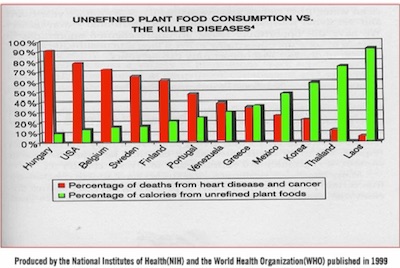
The Pleasure Trap – why it’s so hard to do what’s right
Doug Lisle, Ph.D. is a psychologist and co-author of The Pleasure Trap – Mastering the Hidden Force that Undermines Health and Happiness along with Alan Goldhamer. I had the “pleasure” of listening to a lecture by Dr. Lisle as part of the coursework I am taking to earn a certification in plant-based nutrition through Cornell’s online university, eCornell. Here are the key take-aways of Dr. Lisle’s lecture.
Most of us have been educated and quite frankly bombarded with messages about how to live a healthy lifestyle. When it comes to diet we know that eating more fruits and veggies is good and that we should avoid highly processed foods, sugar, the wrong kinds of fats, etc. Even though we know this information and may have a strong desire to follow a healthy diet, we find ourselves eating or drinking the wrong foods and beverages. Why is that?
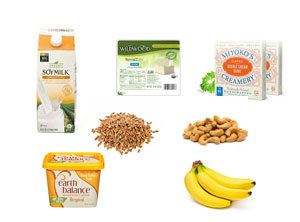
Plant-based, vegan cooking – substitutions for milk, eggs and more
One of the fun adventures in transitioning to a whole food, plant-based (WFPB) vegan lifestyle is experimenting in the kitchen by learning how to modify recipes. Here are some suggestions to get you started.
Milk
- Instead of using cow’s milk in recipes, simply substitute plant milk such as almond, coconut, hemp, or soy in a 1:1 ratio.
- You can also make your own cashew milk by combining 1 cup cashews with 4 cups water in a high speed blender, such as a Vitamix. For best results, soak the cashews in water for 4 hours or overnight prior to blending.
- You can use this same recipe for making almond milk, but you’ll definitely need to soak the almonds overnight and then strain through a nut bag.
Buttermilk
- Add 1 Tablespoon apple cider vinegar to 1 cup non-dairy milk
Cream
- Cashews also make a great cream substitute. Just use less water than when making milk. Mix 1 cup cashews with 1/4 to 1/2 cup water and blend. Start with less water and add more until you get your desired consistancy. You can add a sweetener such as maple syrup, a bit of sea salt and natural vanilla extract to add flavor and sweetness.
Sour cream
- Use plain soy yogurt instead of sour cream
Butter
- Use olive oil or coconut oil instead of butter, or buy a vegan butter such as Earth Balance. It uses organic (non-GMO) palm fruit, soybean, canola and olive oils.
- You can also use almond butter instead of oil or butter when baking cookies.
Mayonnaise
- Try vegan mayonnaise such as Hampton Creek’s Just Mayo which uses non-GMO expeller-pressed canola oil, lemon juice and white vinegar as key ingredients.
- You can also use a mashed avocado or guacamole, hummus or baba ganoush on sandwiches instead of mayo.
Cheese
- Use nutritional yeast flakes instead of cheese in recipes such as risotto.
- Tofu is also a great substitute for ricotta cheese in lasagne. I like to blend soft tofu in the food processor with a bit of fresh spinach, garlic and onion powder plus salt and pepper for a tastey ricotta.
- There are some fantastic vegan cheeses that are coming onto the market. Recently I tried Miyoko’s Creamery Double Cream Chive cheese which is made from organic, non-GMO cashews, coconut oil, chives, chickpea miso and other ingredients. It is wonderful as an appetizer served with crackers or a sliced baquette, grapes or apple slices.
Eggs
- In baking, good egg substitutes include banana, applesauce, or soft tofu.
- You can also use ground flax or chia seeds. Mix 1 Tablespoon ground seeds with 2 Tablespoons water and let sit for a bit.
- You can also buy Ener-G Egg Replacer which is made from potato starch, tapioca flour and levening agents.
- For making scrambled eggs, substitute tofu, such as in our tofu scramble recipe. You can also use tofu in quiches and custard and eggless “egg salad” sandwiches.
Gelatin
- Chia seeds make a great gelatin and puddings. See our recipes for a chia breakfast pudding and chia and coconut milk dessert pudding.
- Agar, made from algae, is a great gelatin substitue as well and is used predominently in Asia for jellies, desserts and as a thickener in soups.
Stock / Broth
- For soups or making risotto, use a vegetable broth instead of chicken or beef stock
So have fun experimenting with your favorite recipes and let us know if you have other tips or suggestions for vegan substituions.
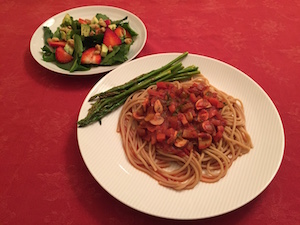
3 reasons you’ll LOVE going vegan for Valentine’s Day
Here are three great reasons for cooking a whole food, plant-based meal for your special someone this Valentine’s Day.
- Heart-healthy
Research has proven that a whole food, plant-based (WFPB) diet consisting of vegetables, fruits, grains and legumes can improve and even reverse heart disease. A study published in the July 2014 issue of The Journal of Family Practice, called “A Way to Reverse CAD” (Coronary Artery Disease), found that 81% of study participants improved their symptoms and 22% experienced a complete reversal of their condition. Since there is no cholesterol in plants and low saturated fat, people on a plant-based diet tend to have lower cholesterol numbers as well as lower blood pressure than those who consume meat and dairy products. Source: PCRM. So you can feel good about serving a meal that will help your heart, and your partner’s, beat longer and stronger.
Healing inflammation with food
Inflammation is part of our body’s natural immune response, the first line of defense in protecting our bodies from invading organisms that enter our system through wounds or by contact with viruses and bacteria. Inflammation tends to attack the weakest organ system first, depending on genetics and/or pre-existing health conditions.
When inflammation gets out of control and does not heal, it creates a constant irritant that can result in different types of health problems, such as diabetes and heart disease. Autoimmune disorders, such as rheumatoid arthritis, lupus, and polymyalgia rheumatic, are also associated with chronic inflammation. In addition, inflammation can damage the body’s immune system as it continues to mistakenly initiate an inflammatory response even when there is no apparent need, such as in asthma, ulcerative colitis and Crohn’s disease. It is not surprising that, according to the Yale Journal of Biology and Medicine, “Inflammation has long been associated with the development of cancer.”
Fortunately, there is something we can do to reduce inflammation and help support our body’s healing process that does not require expensive drugs or surgery. (more…)

